A digital marketing agency sales process starts from a lead and ends with closure. But have you ever wondered what happens in between?
Getting down to the details of your sales process can help you rake in more clients and achieve better results – and the numbers prove it.
Your chances of being a top agency increase by 33% by having an established sales process. Moreover, companies that have optimized their sales process generate up to 28% more revenue.
You might ask, what exactly is a sales process, and what are the steps? Are there any practices I must be aware of? Let’s immerse ourselves in the world of sales and digital marketing to find the answers to your biggest questions.
What is a Sales Process?
When we talk about generating revenue, the first word that comes to mind is sales. However, the process of making a sale isn’t always clear for most people.
A sales process refers to the sales workflow that an agency follows to guide the potential customer from the top of the sales funnel. Defining the sales process within agencies involves understanding how it starts with the prospecting of the consumer all the way to their actual purchase.
What is the Main Purpose of the Selling Process?
The primary purpose of having your own selling process is to have a clear and effective method to generate sales. Defining these steps ensures consistency in executing your sales efforts. In fact, Harvard Business Review mentions that defining your sales process will likely increase your revenue.
Think of it as a part of your roadmap to building your profitable agency. Establishing your process provides a clear path for new and old employees to understand your agency’s approach to selling better.
You can also establish your key performance indicators (KPIs) with your sales process. You’ll need these metrics to determine if your sales approach has succeeded or needs some work.
Sales procedures are often structured. However, too much structure comes at the cost of rigidity, which can spell trouble in a dynamic marketing landscape. The purpose of the selling process is to merely be a sales guide, but this can be tweaked depending on the situation.
There will come a time when you encounter clients who are more responsive to a specific sales approach. In this scenario, a structured sales process might not be enough to close the sale. That’s why finding the right balance between rigidity and flexibility is crucial.
Does a Marketing Agency Sales Process Differ?
The short answer to this is – yes, it does differ! Although there are nuances in the sales process across different agencies, growing your sales remains the core idea.
How does it differ? The answer is pretty simple. In our example, we’ll compare the differences in the sales process between a content marketing agency and a full-service marketing agency providing social media marketing, content creation, and influencer marketing services.
Both agencies start with understanding who their clients are. When creating a sales process framework, their differences begin early in the sales process process. A content marketing agency’s framework will be more specialized than a full-service marketing agency.
When contacting prospective clients, a content marketing agency will focus more on the value of stellar content, showcasing their successful content campaigns.
Meanwhile, a full-service marketing agency can be discussing its full range of services and how they can merge to form a killer marketing strategy for clients.
How Do Salespeople Prepare To Sell?
The first step in preparing to sell is to do your research. Who are your potential clients? What services are they likely to avail?
Then, you must have a deeper understanding of your target demographic, industry trends, and their specific needs to have a successful sales process.
Of course, knowing your clients isn’t enough – you have to understand your services, too! By knowing the essential features and your unique selling points, selling can be much more effective.
On paper, this may sound easy, but any salesperson worth their salt knows that the art of making a sale requires a whole lot of skill.
To provide you with a better understanding of the sales process, Prospecting On Demand offers mentorship programs to initiate your selling journey.
What is a Sales Process Map?
A sales process map is a graphic representation of your sales process, giving you an easy glimpse into it. Being your visual guide for the whole company selling process, you’ll see all the steps from the prospecting stage to post-sale activities.
10 Steps in the Sales Process for Marketing Agencies
Now, we’ll walk you through each step in the marketing agency sales process. Here are some key sales cycle stages:
Step 1: Understand the Target Audience
You know what they say in business – know your customer. Without knowing your target audience, your business venture is likely to fail.
Here’s how you can understand your target audience:
- Identify the target audience for marketing agency services.
- Utilize market research to understand audience needs and preferences.
- Segregate your target audience and identify their needs and preferences.
- Conduct surveys and interviews to understand your customers better.
- Analyze how customers interact with your website (if you already have one).
While this isn’t an exhaustive list of ways to understand your target audience, these are great starting points for gaining valuable customer insights.
Step 2: Create a Sales Process Framework
A good sales process always involves creating a sales process framework.
Here’s how you can start your own:
- Frame the sales process with a fast-failure approach.
- Customize steps in the sales process based on agency goals and services.
- Collaborate with the marketing team to ensure a cohesive sales approach.
- Gather feedback on your sales process and iterate it as needed.
Establishing your own sales process framework from scratch can be quite daunting. Remember that what’s important is getting started and finding what works for you. Always, always, always strive to improve your agency processes based on feedback and continuous learning.
Step 3: Source and Qualifying Leads
Now that we have identified our target audience and created a sales process framework, what’s next? Finding new leads! You can start with the following steps:
- Generate leads for the marketing agency.
- Conduct a sales pre-qualification survey as an initial step in lead qualification.
- Attend networking events such as conferences and industry-specific events.
- Host a webinar to meet new clients who might be interested in your services.
- Implement a referral program for clients and employees.
In the business world, your network is your net worth, meaning you must be creative in finding new leads. By doing so, you open doors for your agency to prosper.
Step 4: Nurturing Prospects through Communication Channels
Communication is the lifeblood of every business relationship – the best sales process will always focus on effective communication.
You must use your communication channels effectively to strengthen your relationship with your prospects. Here’s how:
- Clarify important questions through email communication with prospects.
- Evaluate prospects using CRUX or another qualifying checklist.
- Keep your social media platforms open for communication.
- Add chatbots to your websites to answer a prospect’s basic questions.
- Offer virtual consultations to understand better the challenges that need to be addressed.
Remember that it’s just as important to follow up on emails or calls actively. With almost 50% of salespeople never making a follow-up attempt, you can stand out by demonstrating active communication.
Thus, keeping your lines open and demonstrating proactive communication is crucial. By doing so, you start your agency relationship on a high note.
How do salespeople assist customers during the sales process?
Providing top-notch quality service is a must-do for digital marketing agencies. Salespeople can personally speak with customers through your lines available for communication to create an individualized experience.
Salespeople are the “front” of your company as they educate prospects on the agency’s services. After conversing with customers, they create tailored solutions based on the customer insights they gained.
For salespeople, assisting customers isn’t a one-time event. The main objective is to build a long-lasting relationship. In case customers have inquiries or other concerns, they will be reaching out to your salespeople.
Step 5: Conduct Exploratory Calls
Next, we have to conduct exploratory calls with qualified prospects. These calls help you understand their pain points so you can better work toward an effective solution. Here’s how you can have a successful exploratory call:
- Building rapport with a prospect and creating a positive atmosphere.
- Tailoring exploratory calls based on prospect needs and pain points.
- Focusing on the prospect by asking open-ended questions and practicing active listening.
- Sharing your agency’s success stories with how you tackled similar challenges.
- Clarifying expectations and addressing any concerns.
A compelling exploratory call will always start with putting your clients first. Begin with building rapport and end it by clarifying concerns or discussing the next steps. At the end of the day, remember that your goal is truly understanding your prospect’s business objective.
Step 6: Gather Stakeholder Feedback
One of the essential elements of a sales process is gathering stakeholder feedback. You can improve your service and work on your weaknesses from this data. Here’s how you can gather stakeholder feedback effectively:
- Involving other stakeholders in the decision-making process through pre-qualification survey responses.
- Re-validating prospects against qualifying checklist or CRUX after stakeholder feedback.
- Conducting feedback surveys, interviews, and post-project reviews with stakeholders.
A crucial step in growing your agency is to gain insights through stakeholder feedback. Not only does this data improve your sales process, but it also contributes to your journey toward continuous improvement.
Step 7: Deliver a Comprehensive Proposal
If you’re done with steps 1 to 6, we’ll move to step 7 – delivering a comprehensive proposal. Here’s how you can write a convincing yet detailed proposal:
- Schedule a proposal review meeting or video call with prospects.
- Create and present a proposal tailored to prospect needs and objectives.
- Make a compelling offer that works best for you and your client.
- Perfect your executive summary to show you genuinely understand their needs.
- Add testimonials to establish trust and credibility. A study by G2 shows that 90% of buyers are more likely to convert after reading reviews.
Delivering a winning sales proposal requires taking a client-centric approach. Placing them at the center of the approach sets the tone for a positive and long-lasting collaborative partnership.
Step 8: Close the Deal and Onboarding New Clients
Should your proposal succeed, you should move to the next step: closing the deal! You’ve made it this far, so now what? Onboarding new clients is also one of the final steps in the sales process. Here’s how you can do it in your agency:
- Negotiating terms and finalizing contracts to close deals with clients.
- Transitioning smoothly into the client onboarding process after closing the deal.
- Defining the points of contact on both sides to ensure seamless communication.
- Introducing critical members of your team to the client.
- Establishing proper feedback mechanisms for clients to provide insights early on.
- Once you’ve secured the deal, you must work on other tasks to successfully onboard your client. In doing this, you lay the foundation for a smooth sailing-partnership.
Step 9: Continuous Improvement
Improvement must never stop! To build a legacy with your marketing agency, you must understand that learning is a continuous process. Know that if you work to improve your services, you’ll set yourself apart from your competitors.
Here’s how you can improve your agency’s offerings:
- Refining the sales process based on feedback and results.
- Aligning the sales process with the buyer’s journey for better conversion rates.
- According to PwC, investing in relevant training helps provide an excellent customer experience.
- Staying up-to-date on technologies that can give you that much-needed edge.
- Implementing a system for performance reviews.
To succeed in your business venture, or in any field for that matter, being good just doesn’t cut it anymore. Good is the enemy of great. Strive for greatness by challenging yourself and embracing a mindset of continuous learning.
Step 10: Measuring Sales Process Effectiveness
To gauge the effectiveness of your sales process, you have to take a data-driven approach. Here’s how you can do it:
- Establish key performance indicators (KPIs) to track sales process performance.
- Analyze metrics and make data-driven decisions for optimization.
- Seek client feedback to improve your sales process.
- Adjust your strategies based on the insights gained from data analysis.
This final step is essential for every sales process because how will you know if you’re on the right track without evaluating your process? From your analysis, you can easily identify areas of strengths and weaknesses to improve your sales process.
Sales Process Best Practices – How to Avoid Pitfalls
Here’s how you can avoid pitfalls in developing a sales process:
- Involve all stakeholders and team members in defining and implementing the sales process.
- Map the buyer’s journey to understand prospects’ decision-making process.
- Not leaving steps open to interpretation in the sales process.
- Align sales plays with the defined sales process.
- Measure KPIs and track team performance.
Conclusion
You must establish a transparent sales process when founding your agency. By following each step, you’ll close deals that’ll lead to long-term client relationships – a critical ingredient for your agency’s success.
With the help of our industry leaders at Prospecting On Demand, you can create a sales process that suits your agency. Schedule your free assessment now!








